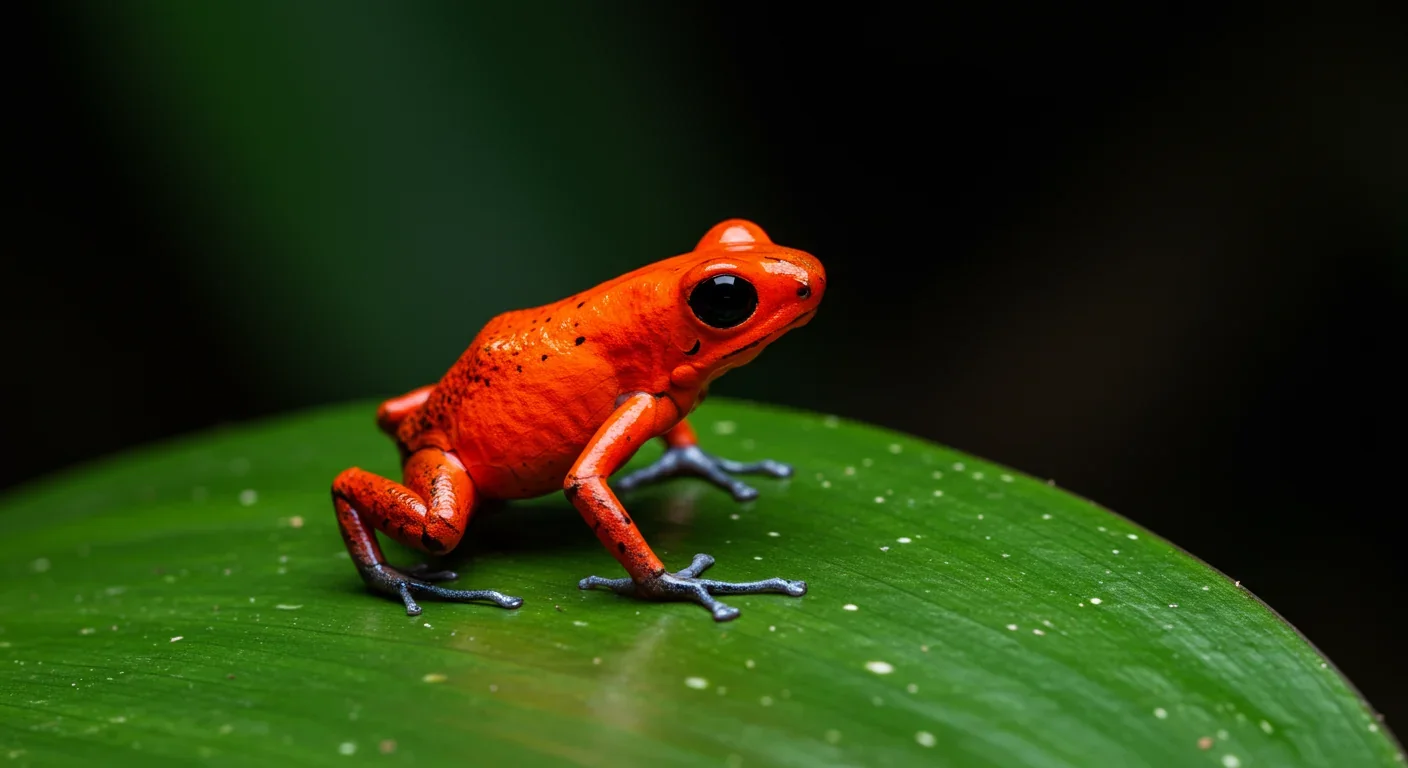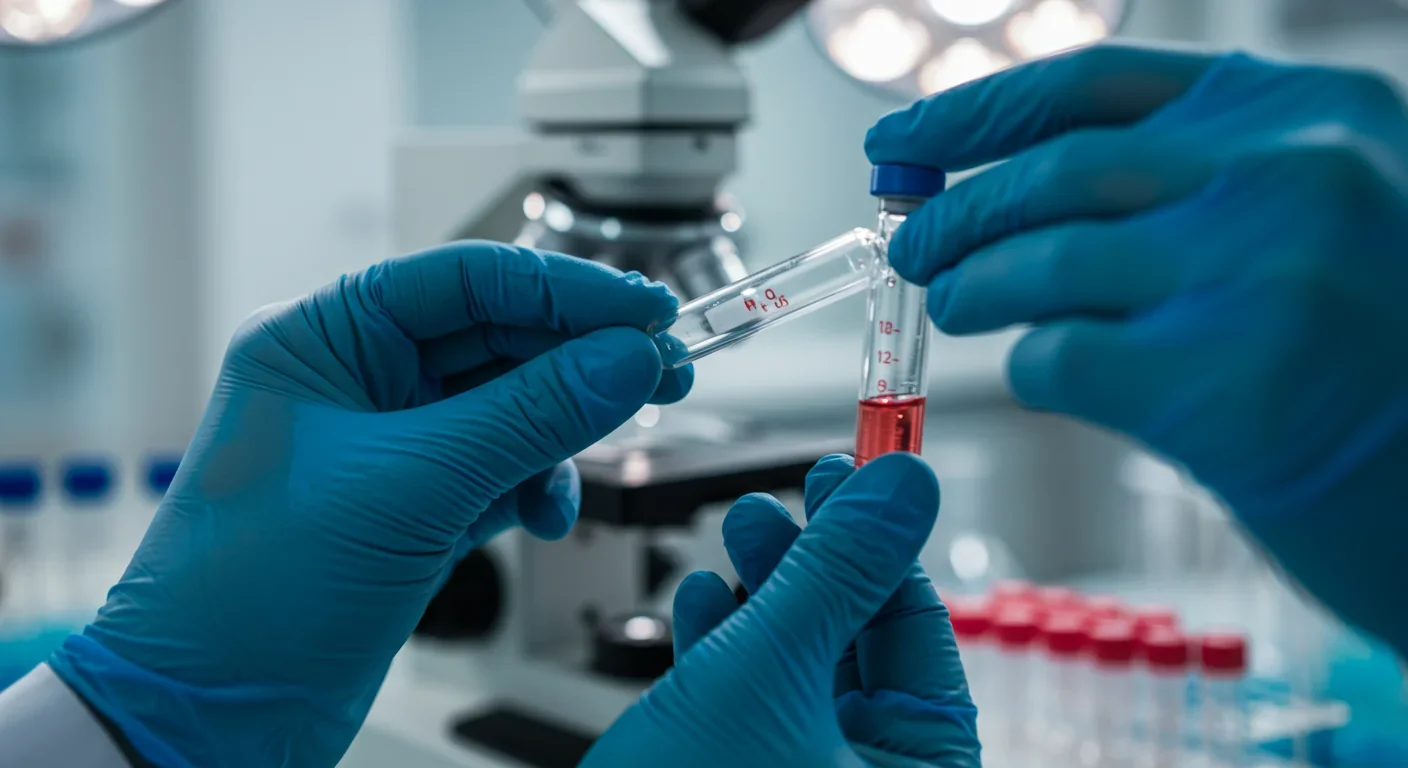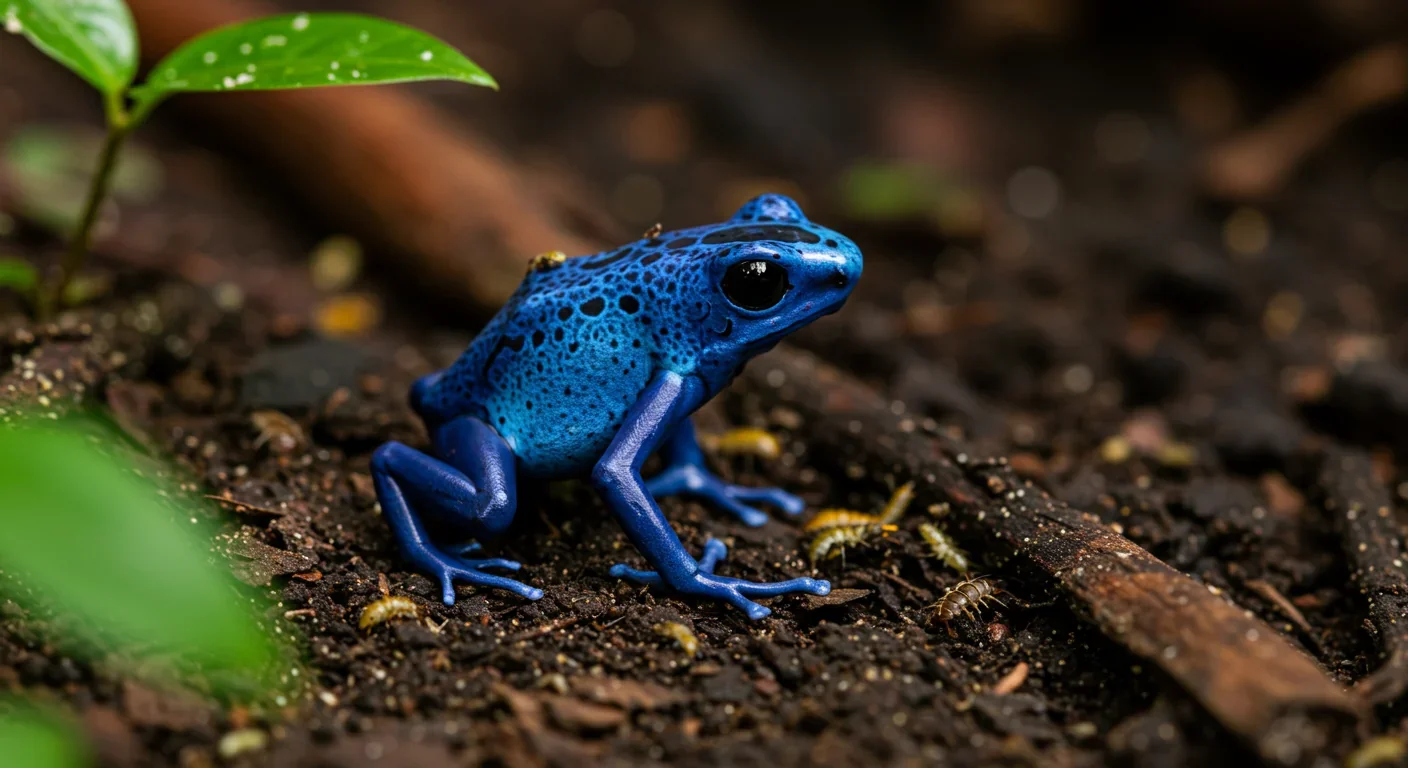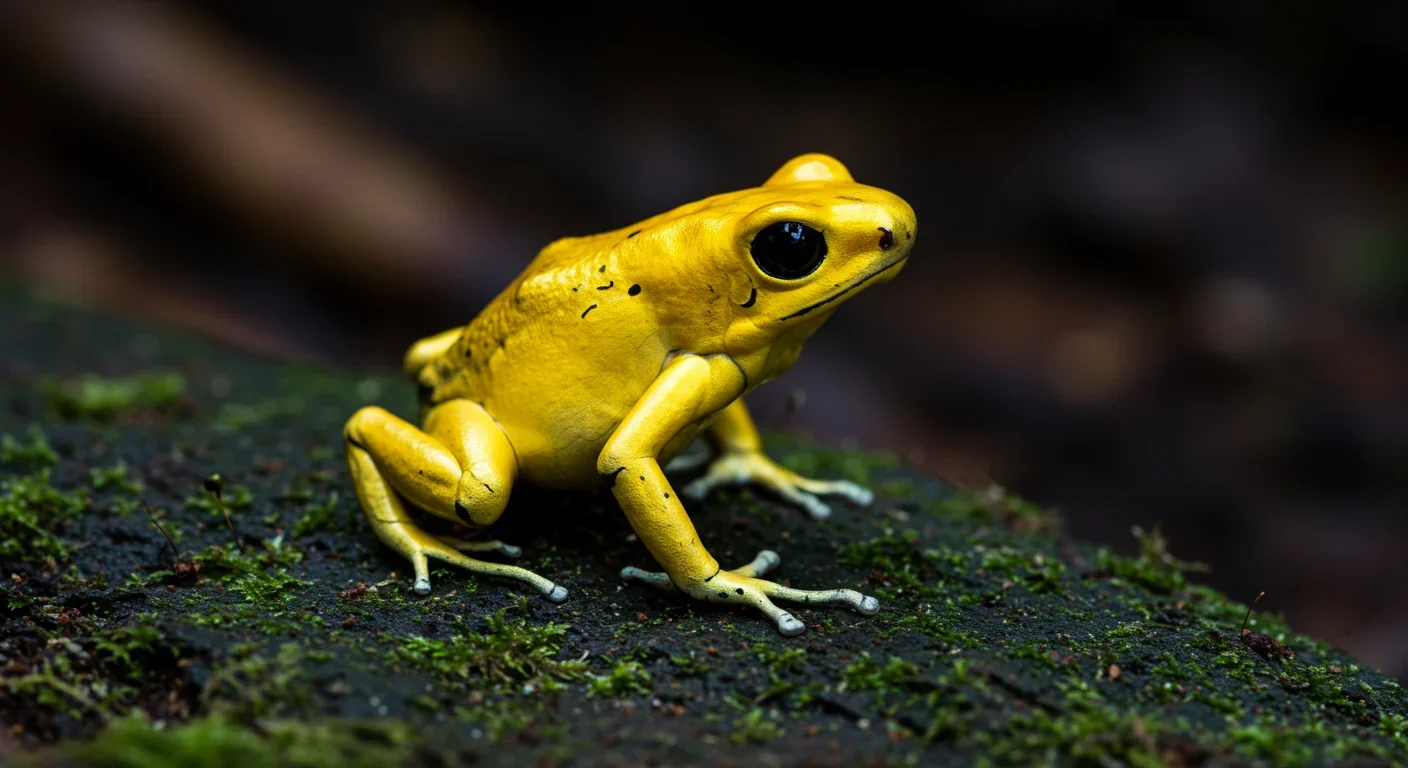Forest Biological Clocks: Ecosystems That Keep Time

TL;DR: Poison dart frogs don't make their own toxins—they steal them from ants and mites they eat. A newly discovered protein called ABG safely transports these alkaloids to their skin, creating one of nature's deadliest defenses through dietary sequestration.

Here's something that'll flip your understanding of nature's deadliest creatures: poison dart frogs don't actually make their own poison. These tiny, brilliantly colored amphibians—some of the most toxic animals on Earth—are running what amounts to a sophisticated chemical heist operation, pilfering their lethal defenses from the ants, mites, and other arthropods they eat. It's one of evolution's most elegant solutions to a dangerous problem, and it's reshaping how we think about animal defenses, drug discovery, and even the future of treating human poisonings.
The discovery that poison dart frogs sequester toxins from their diet rather than synthesizing them internally came as a shock to biologists. After all, when you encounter a creature that can kill ten to twenty humans with the toxins contained in its skin, you'd naturally assume it had evolved some incredibly sophisticated internal chemical factory. But the truth is far stranger and, in many ways, more fascinating.
In the rainforests of Central and South America, poison dart frogs are conducting daily raids on some of nature's smallest chemical weapons manufacturers. Their targets? Primarily ants and mites—arthropods that produce alkaloid compounds as their own defensive chemicals. When a strawberry poison dart frog snaps up a formicine ant or an oribatid mite, it's not just getting a meal. It's acquiring ammunition.
The process, known as dietary sequestration, is remarkably efficient. Frogs don't break down these alkaloids during digestion like most animals would. Instead, they absorb them intact, transport them through their bloodstream, and concentrate them in specialized skin glands. Over time, a single frog can accumulate dozens of different alkaloid compounds, creating a toxic cocktail that makes them virtually inedible to predators.
Scientists discovered this mechanism almost by accident. When poison dart frogs were bred in captivity and raised on standard laboratory diets of fruit flies and crickets, something unexpected happened: the baby frogs grew up completely non-toxic. Same species, same genes, but utterly harmless. Feed those same captive-bred frogs a diet containing the right alkaloid-producing arthropods, and their toxicity returns. This reversibility proved beyond doubt that the poison was dietary, not genetic.
When poison dart frogs are raised in captivity on standard diets, they develop no toxicity whatsoever. Their deadly defenses return only when they're fed alkaloid-containing prey—proving that their poison is entirely borrowed, not manufactured.
For decades, this presented a frustrating paradox: how do poison dart frogs safely handle toxins that should kill them? The alkaloids they accumulate—compounds like batrachotoxin, pumiliotoxin, and epibatidine—are neurotoxins that interfere with nerve and muscle function. A tiny amount can be lethal. Yet frogs swim through their bloodstream carrying concentrations that would drop an elephant.
The answer emerged in 2023, when researchers identified a protein they named alkaloid binding globulin, or ABG. Think of it as a molecular sponge that soaks up alkaloids in the frog's blood plasma, preventing them from interacting with sensitive tissues and cellular machinery. By binding the toxins tightly, ABG transforms them from deadly threats into safely transported cargo.

What makes this discovery particularly intriguing is that ABG appears to be an evolutionary adaptation of proteins that normally transport hormones in vertebrate blood. The frog essentially repurposed existing molecular machinery, tweaking it to handle toxic alkaloids instead of endocrine signals. It's biological innovation at its finest—nature taking what's available and bending it to a new purpose.
The research published in eLife showed that ABG doesn't just neutralize alkaloids; it actively concentrates them. Once bound to ABG, alkaloids are preferentially transported to granular glands in the frog's skin, where they're stored in high concentrations. When a predator bites or mouths the frog, these glands rupture, delivering a dose of toxin that's both immediate and overwhelming.
"This discovery may suggest that the frog's hormone-handling proteins have evolved the ability to manage alkaloid toxins."
— Dr. Aurora Alvarez-Buylla, eLife Study
Not all poison dart frogs are created equal when it comes to toxicity, and diet explains much of this variation. The golden poison frog (Phyllobates terribilis), found in a small region of Colombia's Pacific coast, is the most toxic land animal known to science. A single individual contains enough batrachotoxin to kill ten to twenty adult humans. But golden poison frogs in one valley might be significantly more toxic than those in the next valley over, and the difference comes down to what's on the menu.
Research has shown that poison frog chemical defenses are influenced by environmental availability of alkaloid-containing prey. In regions where certain species of oribatid mites are abundant, frogs accumulate more pumiliotoxins. Where formicine ants dominate, you see different alkaloid profiles. Some populations have access to beetles that provide yet another class of compounds.
The strawberry poison dart frog demonstrates this beautifully. Across its range in Central America, researchers have documented remarkable variation in both coloration and toxicity. Females in some populations have evolved granular glands that are significantly larger than those of males, allowing them to store higher concentrations of alkaloids. These females then provision their tadpoles with unfertilized, alkaloid-rich eggs—essentially gift-wrapping the next generation's chemical defenses.

The specificity of this system is striking. Not just any ant or mite will do. Brachymyrmex ants and certain species of oribatid mites appear to be particularly important dietary sources, but the exact species vary geographically. This has led to a fascinating pattern of local adaptation, where frog populations are chemically tuned to their local prey communities.
Why go to all this trouble? Why not just evolve to make your own toxins? The answer lies in evolutionary economics. Manufacturing complex alkaloids from scratch requires dedicating significant genetic and metabolic resources to biosynthesis pathways. Each toxin compound might require a dozen or more specialized enzymes, all of which need to be encoded, expressed, and regulated.
Dietary sequestration sidesteps all of that. Instead of building a chemical factory, frogs evolved a collection system—essentially two innovations: ABG to safely handle the toxins, and modified skin glands to store them. This is far more evolutionarily economical than developing complete biosynthesis from scratch.
There's another advantage too: flexibility. Biosynthesis locks you into producing whatever your genes encode. But sequestration lets you adapt to whatever the local environment provides. If a new arthropod species colonizes your habitat and happens to produce useful defensive compounds, you can potentially exploit it without waiting for new genes to evolve. This explains why poison dart frogs collectively accumulate over 800 different alkaloid compounds—far more than any organism could realistically biosynthesize.
The strategy has proven so successful that it's not unique to poison dart frogs. Passive accumulation of alkaloids has evolved independently in several other frog lineages, and similar dietary sequestration occurs in certain butterflies, birds, and other taxa. It's a convergent solution that keeps appearing because it works so well.
Poison dart frogs collectively accumulate over 800 different alkaloid compounds—far more chemical diversity than they could ever produce through biosynthesis. Stealing beats manufacturing when it comes to chemical defense.
The medical implications of frog toxins have captivated researchers for decades. Epibatidine, isolated from certain poison dart frog species, is about 200 times more potent than morphine as a painkiller. The problem? Its therapeutic dose is dangerously close to its lethal dose, making it far too risky for human use. But understanding how it binds to nicotinic receptors in the nervous system has inspired the development of safer synthetic analogs.

The discovery of ABG opens even more intriguing possibilities. If we can understand exactly how this protein binds and neutralizes alkaloid toxins, we might be able to engineer similar proteins for treating human poisonings. Imagine a therapy that could quickly neutralize snake venom, plant toxins, or even certain drug overdoses by deploying a modified version of the frog's toxin sponge. It's speculative for now, but the biological proof of concept is sitting right there in poison dart frog blood.
Beyond direct medical applications, poison dart frogs are teaching us fundamental lessons about protein evolution and molecular recognition. The fact that ABG evolved from hormone transport proteins demonstrates how evolution can repurpose existing molecular tools for radically new functions. This principle is now informing protein engineering efforts across biotechnology.
Of course, evolution never sleeps, and some predators have called the frogs' bluff. The snake Erythrolamprus epinephalus has evolved resistance to poison dart frog toxins, allowing it to prey on species that would kill any other snake. This represents an evolutionary arms race: frogs evolve better chemical defenses, predators evolve better resistance, frogs respond by diversifying or intensifying their toxins, and the cycle continues.
This dynamic creates what biologists call frequency-dependent selection. If a particular alkaloid becomes too common, predators evolve resistance to it, making alternative alkaloids more advantageous. The dietary sequestration strategy, with its inherent flexibility, may help frogs stay ahead in this chemical arms race by allowing rapid shifts in defensive chemistry as prey availability changes.
There's also evidence that bacteria living on frog skin can metabolize certain alkaloids, potentially helping frogs regulate their toxin concentrations or neutralize toxins before they're stored. This suggests that the full story of poison dart frog chemical defense may involve not just frogs and their prey, but also their microbial partners—a three-way relationship that's only beginning to be understood.
"If such efforts are successful, this could offer a new way to treat certain kinds of poisonings."
— Dr. Lauren O'Connell, Stanford University
The brilliant coloration of poison dart frogs—electric blues, day-glow yellows, candy-apple reds—serves as aposematic warning signals to potential predators. This coloration is tightly correlated with toxicity: the brighter the frog, typically the more toxic it is. It's essentially truth in advertising, and it works because predators learn to associate those vivid colors with unpleasant or lethal experiences.

But here's where the dietary connection becomes critical. For aposematism to evolve and persist, the warning signal must be honest. If non-toxic frogs could easily fake the bright colors without paying the cost of being toxic, predators would stop taking the warning seriously. The fact that toxicity depends on diet creates an inherent honesty in the system. Blue poison dart frogs living in areas with abundant alkaloid-rich prey become genuinely toxic and can afford to advertise it. Those in prey-poor areas may be less toxic and, accordingly, tend to be less brightly colored.
This geographical variation has created a spectacular diversity of color morphs, particularly in species like the strawberry poison dart frog, which exhibits at least 15 distinct color patterns across its range in Central America. Each morph reflects a local equilibrium between prey availability, toxicity levels, and predator pressure.
The dietary basis of poison dart frog toxicity has serious conservation implications. When we protect poison dart frog populations, we're not just protecting the frogs themselves—we're protecting entire ecological networks. If the ants and mites that provide alkaloids disappear due to habitat degradation, pesticide use, or climate change, frog populations may survive initially but gradually become less toxic, potentially leading to increased predation and eventual decline.
Recent research has documented passive accumulation of alkaloids in inconspicuously colored frogs, suggesting that the capacity for dietary sequestration may be more widespread than previously thought. This has important implications for conservation priorities. We may need to protect not just the most spectacularly colored species, but also drabber relatives that possess similar biochemical capabilities.
The golden poison frog is now listed as endangered, with habitat loss being the primary threat. But for this species and others, conservation must extend beyond preserving forest fragments. We need to maintain the invertebrate communities that sustain the frogs' chemical defenses. That means protecting leaf litter, fallen logs, and the complex forest floor microhabitats where alkaloid-producing arthropods thrive.
Protecting poison dart frogs means protecting the invisible web of relationships that sustain them. When we save forest floor arthropods, we're not just preserving biodiversity—we're maintaining the chemical supply chains that keep these frogs alive.
Climate change adds another layer of complexity. Shifts in temperature and precipitation patterns are already altering the distributions of insects and other arthropods. As prey communities change, frog populations may lose access to their traditional sources of alkaloids, forcing them to either adapt to new prey items or risk becoming defenseless. Understanding exactly which arthropod species provide which alkaloids—and how climate change is affecting those species—is becoming an urgent conservation priority.
The poison dart frog system continues to surprise researchers. Recent studies have revealed that even within a single frog, alkaloid profiles can vary over time, suggesting active regulation rather than passive accumulation. There's evidence that frogs may preferentially select alkaloid-rich prey when available, though how they identify such prey remains unknown. Do they taste for alkaloids? Associate certain prey appearances with alkaloid content? We don't yet know.
The evolutionary origins of dietary sequestration remain partially mysterious. How did the first proto-poison-dart-frogs survive when they began accumulating alkaloids before ABG or equivalent protection evolved? Were there intermediate stages involving lower toxicity or different toxin types? Answering these questions requires both paleontological evidence and comparative studies across related frog lineages.
What we do know is that poison dart frogs have achieved something remarkable: they've hacked the chemical defenses of other organisms and made them their own. In doing so, they've become some of the most toxic, most colorful, and most studied amphibians on the planet. Their continued survival depends on maintaining the complex ecological relationships that supply their defenses—a reminder that in nature, even the most self-sufficient-looking creatures are embedded in webs of interdependence.
The next time you see a poison dart frog in a zoo or photograph, remember: you're not looking at a self-contained chemical weapons factory. You're looking at the end point of an elaborate ecological chain, a living testament to evolution's creativity, and a creature whose survival depends on the smallest inhabitants of the rainforest floor. In protecting these frogs, we're protecting an entire world of relationships, most of which remain invisible to casual observation but are no less essential for their obscurity.
That's the real lesson of poison dart frog toxins. It's not just about how spectacularly toxic these tiny amphibians are. It's about how that toxicity emerges from relationships—between frogs and ants, frogs and mites, frogs and the microbial communities on their skin, frogs and their predators. Understanding these relationships isn't just academically interesting. It's essential for conservation, for medicine, and for appreciating the intricate, interdependent nature of life itself.

MOND proposes gravity changes at low accelerations, explaining galaxy rotation without dark matter. While it predicts thousands of galaxies correctly, it struggles with clusters and cosmology, keeping the dark matter debate alive.

Ultrafine pollution particles smaller than 100 nanometers can bypass the blood-brain barrier through the olfactory nerve and bloodstream, depositing in brain tissue where they trigger neuroinflammation linked to dementia and neurological disorders, yet remain completely unregulated by current air quality standards.

CAES stores excess renewable energy by compressing air in underground caverns, then releases it through turbines during peak demand. New advanced adiabatic systems achieve 70%+ efficiency, making this decades-old technology suddenly competitive for long-duration grid storage.

Our brains are hardwired to see patterns in randomness, causing the gambler's fallacy—the mistaken belief that past random events influence future probabilities. This cognitive bias costs people millions in casinos, investments, and daily decisions.

Forests operate as synchronized living systems with molecular clocks that coordinate metabolism from individual cells to entire ecosystems, creating rhythmic patterns that affect global carbon cycles and climate feedback loops.

Generation Z is the first cohort to come of age amid a polycrisis - interconnected global failures spanning climate, economy, democracy, and health. This cascading reality is fundamentally reshaping how young people think, plan their lives, and organize for change.

Zero-trust security eliminates implicit network trust by requiring continuous verification of every access request. Organizations are rapidly adopting this architecture to address cloud computing, remote work, and sophisticated threats that rendered perimeter defenses obsolete.